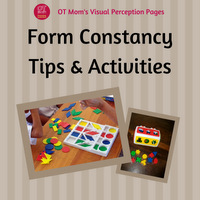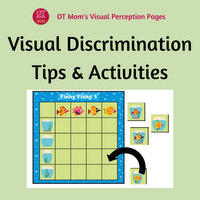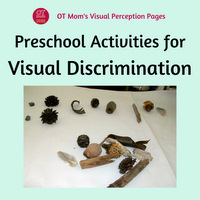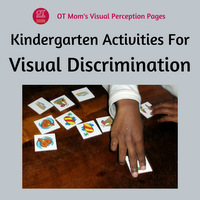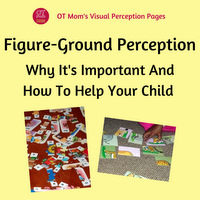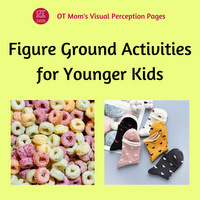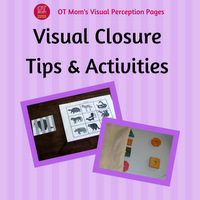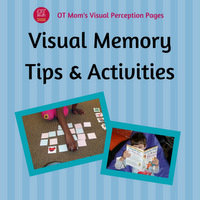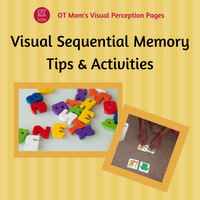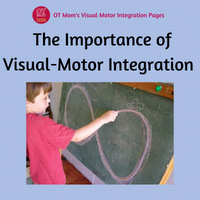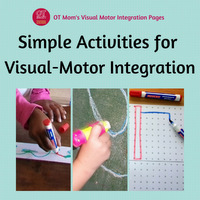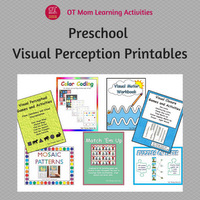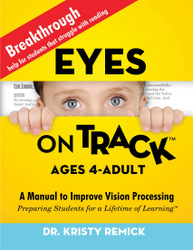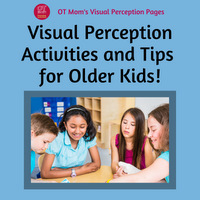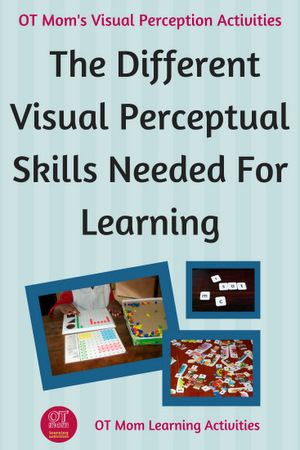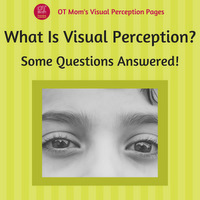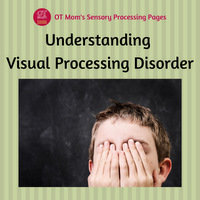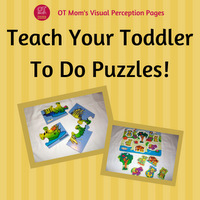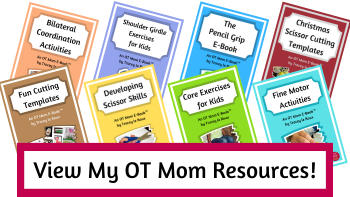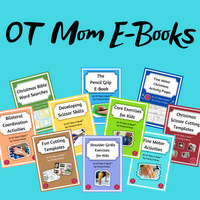- Home Page
- Visual Perception Activities
- Visual Perceptual Skills And Learning
Visual Perceptual Skills & Learning
Visual perceptual skills are the skills that a child uses to make sense of what he or she sees. The eyes send visual information to the brain, and then the brain needs to interpret the information and make sense of it all.
There are many different visual perception skills, which all work together to help your child learn to read and write. This page aims to help you understand the different aspects of visual perception and how you can give your child a good foundation in developing these skills!
* Haz click aquí para español: Percepción Visual en los Niños
This page contains affiliate links (#Ad). I may receive a small commission if your purchase something through my links - however, you are under no obligation to purchase anything!
The Different Visual Perceptual Skills ... And Learning
There are many areas of visual perception and sometimes teachers and professionals differ in the terms they use to describe various visual perceptual tasks.
The following list is not comprehensive, but should cover the skills most commonly referred to within the school environment.
I give a brief summary of how each skill can help a child learn to read or write and then link to a specific page of information, tips and activities on my site to help your child develop that skill.
Form Constancy
Form constancy helps a child to realize that a letter remains the same no matter what font it is printed in, or whether it is written in a different place (such as on a board instead of in a book).
This skill can help the child to recognize and learn numbers and letters more easily.
Try my free form constancy activities and tips to help your child learn how shapes and forms remain constant.
Visual Discrimination
Good visual discrimination can help a child to pay attention to detail and to correctly perceive letters and numbers where there is only a small difference between them (eg S and 5).
This skill can help develop reading and writing fluency, because the child can easily identify the letters and words without confusion.
Use my free fun visual discrimination activities and games to help your child learn to pay attention to visual details in matching things up and spotting things that don’t belong.
Figure-Ground Perception
Figure-ground perception helps children find the correct information in a busy background.
Among other things, this skill may help a child to not lose his/her place when reading or when copying from the board, and can help with map work and dictionary skills.
Try my free figure-ground perception activities to help your child learn to find information in a busy background, using activities and simple games.
Visual Closure
Visual closure skills can help your child to make sense of things that are only partly visible.
This can help your child to read more fluently and decode words more accurately.
Try my free, simple visual closure activities to help your child develop this skill.
Visual Memory and Visual Sequential Memory
Visual memory and visual sequential memory skills can play a vital role in reading and spelling.
You need visual memory skills to remember sight words, and visual sequential memory skills can help you remember the order of letters for spelling.
Make use of readily
available household materials and inexpensive games to improve visual memory and visual sequential memory.
Visual Motor Integration
Visual Motor Integration combines visual perception and fine motor skills, and is, therefore, a vital foundation for good handwriting skills.
Try my free visual-motor integration activities to help prepare your child for formal handwriting lessons.
What If My Child Has Poor Visual Perception?
- If your child has poor visual perceptual skills, this can affect learning to read and write, as well as other important school skills. The different areas of visual perception impact learning in different ways.
Take a look at my overview of what children may struggle with if their skills are poor in a specific area.
- Good visual perception depends on the brain getting accurate information from the eyes, before it can be processed. You may need to have your child’s eyes tested by a behavioral optometrist, who will check visual tracking and convergence skills, as well as 20/20 vision.
Read more about what a behavioral optometrist does.
- Or your child may have a visual processing disorder – an occupational therapist, remedial teacher or educational psychologist should be able to do the necessary assessments to identify the specific visual perceptual skills with which your child is struggling. Children who struggle with sensory processing disorder may also struggle with visual perception.
Give Your Child a Good Foundation in Visual Perception!
How can parents help their child to develop good visual processing skills? Here are a few tips:
1) Do Lots Of Gross Motor Activities
Gross motor activities give the eyes lots of opportunities to track movement, change focus, and experience depth and spatial perception. These are important for good visual perception
- Hand-eye coordination activities are great for boosting visual motor skills as well as general visual perception.
- Bean bag games are great for visual tracking, and there are some other fun hand eye coordination ideas on that page of my site.
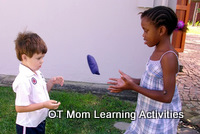
2) Use A Variety Of Visual Perceptual Activities
Expose your child to a variety of activities to develop the different skills. There are lots of ideas for simple hands-on activities at home, on various pages of my site.
Here are some toys and games to look out for in your local toy departments, or perhaps you can borrow some from friends:
(these are my Amazon affiliate links, so you can see what to look for!)
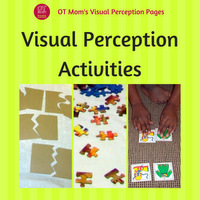
- matching cards
- jigsaw puzzles
- pegboards#Ad
- pattern blocks#Ad
- Spot It!#Ad and Dobble
- Seek and Find Books#Ad
3) Limit Screen Time
Although devices can have many fantastic apps and games that can develop some visual skills, they often do not work on the full range of visual perception skills that your child needs.
In addition, because they are sedentary and the screen tends to stay the same distance away from the eyes, the visual system is not being challenged to adapt and develop the way it would be if your child was playing a hands-on game on the floor, or playing a ball game outside.
So do encourage lots of hands-on activities away from devices!
4) Don't Depend on Worksheets
It is very tempting to sit your child down with some pencil-and-paper worksheets that are supposed to work on visual perceptual skills. But honestly, the best way for a child to develop visual perceptual skills is through play and hands-on activities!
Both gross motor and fine motor play will provide many opportunities to develop and refine visual perceptual skills.
Some Helpful Resources
Over the years, I have used these immensely helpful resources to help kids develop their visual perceptual skills.
There is a difference between worksheets and printable activities! Worksheets require the child to use a pencil or crayon to complete the activity, whereas there are some great printable activities that are cut up into cards in order to complete matching activities, graphing games and so on - these are great to use with preschool and kindergarten kids.
- Printable Preschool Activities
These are some awesome printable activity resources that I use with younger kids to develop their visual perception skills.
Expose your
toddler and preschooler to simple, hands-on activities like these printables and only
introduce pencil-and-paper worksheets once fine motor skills are more mature.
- Eyes On Track
Eyes on Track#Ad is an amazing resource that truly empowers parents, teachers and therapists to help build kids functional visual skills.
After all, if your eyes are not tracking and focusing correctly, you will struggle to get the most out of any visual perception activity!
This is a practical and helpful resource - highly recommend it!
- Resources for Older Kids
It can sometimes be hard to find suitable activities for older kids that help to build their skills without making them feel juvenile.
Over on this page, I have a bunch of visual perception activities and tips to help older kids build their skills!
- For Parents of Babies and Toddlers
If you can get hold of it at your library, the book "From Rattles to Writing"#Ad may be a useful resource to help you encourage your child's normal development from birth
to 5 years.The aim is to help develop all the skills your child needs for reading and for writing.
It is packed full of really practical activities using resources you probably already have at home, and in addition to hand skill development (which is the main focus of the book), there is a section on visual motor development for every year of your child's life from 0-5 years.
Thank you for visiting my site! I hope you found this information on visual perceptual skills helpful!
Why not sign up for my free, occasional newsletter to keep in touch with new ideas, activities and resources?
- Home Page
- Visual Perception Activities
- Visual Perceptual Skills And Learning
Share this page to help others!
Related Pages On My Site
Free Download: Visual Perceptual Skills Info Sheet
This free printable download gives you an overview of the different visual perception skills and how they impact on your child's learning.
It is part of a set of 3 handouts that I compiled to help parents understand how visual perception, gross motor, and fine motor skills can affect your child's learning.
You will get all 3 handouts absolutely free when you sign up for my newsletter!
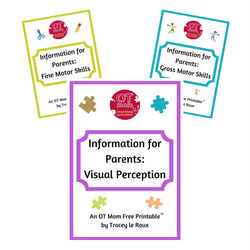
PS: This visual perception download is also available in Spanish.
Didn't find what you were looking for? Try a search of my site!

